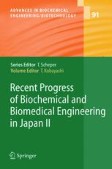Search
Search Results
-
Inexpensive and colorimetric RNA detection at ambient temperature with a cell-free protein synthesis platform
While many proposals of paper-based diagnostics utilize cell-free gene expression systems, these assays oftentimes suffer from the need for...

-
Targeting oncogene-induced cellular plasticity for tumor therapy
Cellular plasticity, the remarkable adaptability of cancer cells to survive under various stress conditions, is a fundamental hallmark that...

-
Controllable self-cleaning FET self-assembled RNA-cleaving DNAzyme based DNA nanotree for culture-free Staphylococcus aureus detection
Staphylococcus aureus (SA) poses a serious risk to human and animal health, necessitating a low-cost and high-performance analytical platform for...

-
Introduction
Genetic algorithms (GAs) are powerful search techniques based on principles of evolution. They are now widely applied to solve problems in many...
-
Linkage Learning Genetic Algorithm
In order to handle linkage evolution and to tackle the ordering problem, Harik [47] took Holland’s call [53] for the evolution of tight linkage quite...
-
Preliminaries: Assumptions and the Test Problem
After introducing the background and motivation of the linkage learning genetic algorithm, we will start to improve and understand the linkage...
-

-
Content Based Image Compression in Biomedical High-Throughput Screening Using Artificial Neural Networks
Biomedical High-Throughput Screening (HTS) requires specific properties of image compression. Particularly especially when archiving a huge number of...
-
Discriminative Clustering of Yeast Stress Response
When a yeast cell is challenged by a rapid change in the conditions, be it temperature, osmolarity, pH, nutrient or other, it starts a genome stress...
-
Medical Bioinformatics: Detecting Molecular Diseases with Case-Based Reasoning
Based on the Human Genome Project, the new interdisciplinary subject of bioinformatics has become an important research topic during the last decade....
-
Transcriptome analysis in abiotic stress conditions in higher plants
Drought, high salinity, and low temperature are major environmental factors that limit plant productivity. Plants respond and adapt to these stresses...
-
Signal transduction in plant cold acclimation
Temperate plants respond to low temperature by activating a cold acclimation program leading to enhanced tolerance to freezing temperatures. This...
-
Plant salt tolerance
Soil salinity adversely affects crop productivity and quality. The success of breeding programs aimed at salinity tolerant crop varieties is limited...
-
Plant responses to heat stress
The heat stress response is characterized by inhibition of normal transcription and translation, higher expression of heat shock proteins (hsps) and...
-
Sensors of abiotic stress in Synechocystis
Systematic mutagenesis of histidine kinases in combination with DNA microarray technology has allowed us to identify sensors for cold, hyperosmotic...
-
Abscisic acid signalling
Signalling of abscisic acid (ABA) in plants is characterized by an amazing number of secondary messengers that are part of the pathway or modulate...
-
Deconvolution Microscopy
Since its introduction in 1983, deconvolution microscopy has become a key image-processing tool for visualizing the cellular structures of fixed and...
-
Molecular Components of Physiological Stress Responses in Escherichia coli
In order to survive under and adapt to different conditions Escherichia coli has evolved elaborate systems that are able to sense and respond to...
-
Application of Knowledge Information Processing Methods to Biochemical Engineering, Biomedical and Bioinformatics Fields
In biochemical and biomedical engineering fields there are a variety of phenomena with many complex chemical reactions, in which many genes and...
